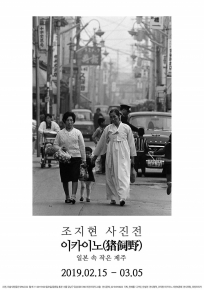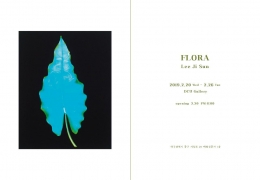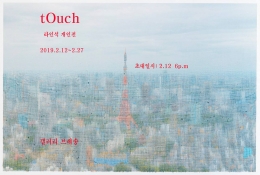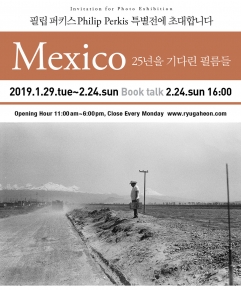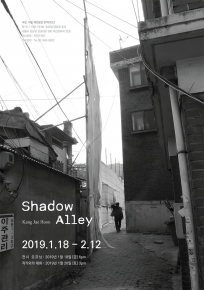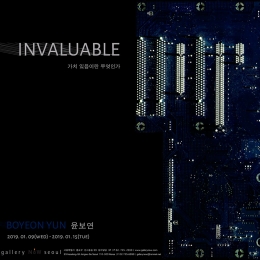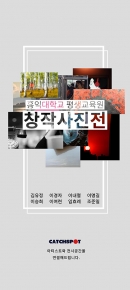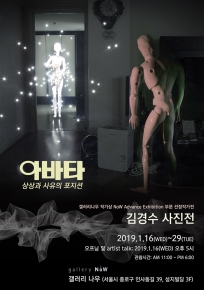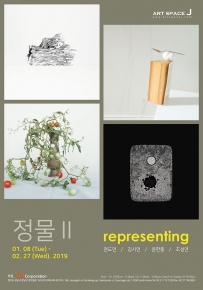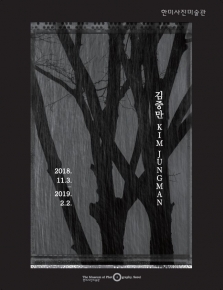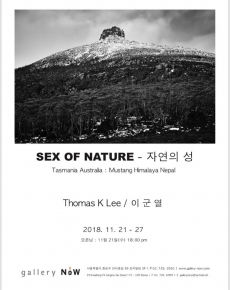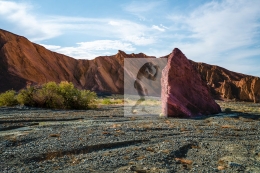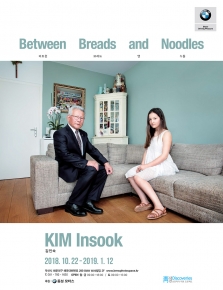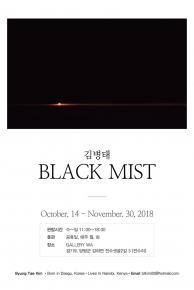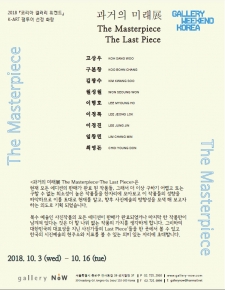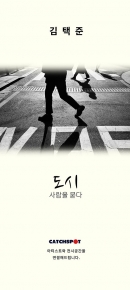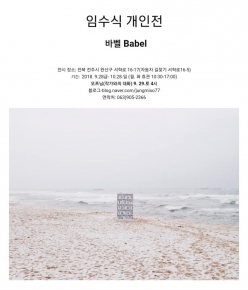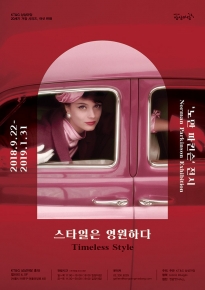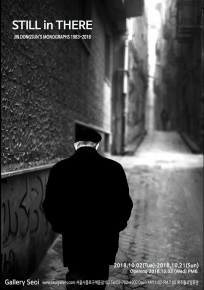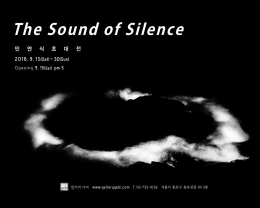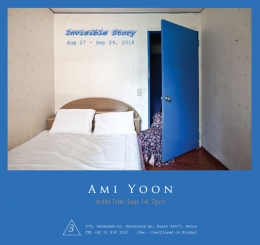Photographer Yeon-sik Min denies the ordinary notions that works of art should express beauty and that photography represents the commonplace. He has worked rigorously for his belief that artistic photography be the vehicle of the hidden meaning of the object which the artist grasps. He had already produced a series of work in [The Delicate Fragrance of Korean Ink], in which his photographic technique made the background of the work pure white like paintings in Chinese ink, denying to depict the ordinary figure of the object in the background. The subject of these works were trees in winter and 10 topics of literary paintings. These analogue black-and-white photographs conveyed the air of literary paintings, whose meanings the artist requested the spectator to grasp for themselves.
지난 한 해 동안 전국을 누볐다. 한 밤에 폭포를 촬영하기 위해서였다. 나는 우리 풍토와 사유(思惟)를 담아 낼 수 있는 사진. 그게 뭘까? 오랜 의문을 풀어주는 실타래는 별빛 아래 떨어지는 폭포 속에 있었다.
어둠 속에서 바위에 부딪치며 끊임없이 반복되고, 다시 만들어지는 질서를 보았다. 같지만 늘 다른 새로운 생명의 꿈틀거림이 폭포에 숨어 있었다. 밤은 검은 것이 아니다. 단순히 색이 없다고 말할 수 없다. 어둠 속에 잠시 낮의 세상을 감출 뿐이다. 서양의 색인 검정과 이 점이 다르다. 수시로 변하는 검은 깊이는 오히려 선(禪)적이다. 동양의 정신세계를 이 지점에서 찾아야 한다고 나는 생각한다.
거센 물줄기는 하나의 음률이 되고 하얀 포말 속에는 소우주가 숨어있었다. 5~10분간의 장시간 노출에서 나는 소리를 조율하는 오케스트라였으며 빛으로 이미지를 만들어 내는 새로움이었다. 나와 폭포가 교감을 통한 깨달음을 향해가는 몸부림이요, 선(禪) 행해가는 과정인 것이다.
폭포의 아름다움과 주위의 어우러지는 풍경을 누구나 쉽게 접할 수 있는 보편적인 프레이밍(framing)의 방법이다. 나는 보편을 배제한 폭포가 주는 다양한 소리의 형태(形態)적 요소를 찾고자하였다. 자연이 주는 일반적인 풍경의 아름다움에서 벗어나 오롯이 검은 배경과 하얀 포말의 선율이 마지막 소리의 형태로 다가와 보였기 때문이다.
소리를 이미지로 담는다는 것, 공기를 이미지로 담는다는 말과 같은 전혀 상식적으로 공감 할 수 없는 이야기일 것이다. 하지만 나는 보이지 않는 폭포의 다른 소리를 음표처럼 이미지로 담고 싶었다. 밤의 폭포의 모습을 담은 것이 아니라 폭포 너머의 보이지 않는 저마다의 소리의 선율을 담았다. 이미지가 아름다운 여인의 가냘픈 목소리로 때로는 거친 세상의 숨소리로 때로는 선율 깊은 음악으로 들리든, 보는 이의 마음속 각자의 나만의 소리를 느낀다면 그것으로 족하다.
민연식
어둠 속에서 바위에 부딪치며 끊임없이 반복되고, 다시 만들어지는 질서를 보았다. 같지만 늘 다른 새로운 생명의 꿈틀거림이 폭포에 숨어 있었다. 밤은 검은 것이 아니다. 단순히 색이 없다고 말할 수 없다. 어둠 속에 잠시 낮의 세상을 감출 뿐이다. 서양의 색인 검정과 이 점이 다르다. 수시로 변하는 검은 깊이는 오히려 선(禪)적이다. 동양의 정신세계를 이 지점에서 찾아야 한다고 나는 생각한다.
거센 물줄기는 하나의 음률이 되고 하얀 포말 속에는 소우주가 숨어있었다. 5~10분간의 장시간 노출에서 나는 소리를 조율하는 오케스트라였으며 빛으로 이미지를 만들어 내는 새로움이었다. 나와 폭포가 교감을 통한 깨달음을 향해가는 몸부림이요, 선(禪) 행해가는 과정인 것이다.
폭포의 아름다움과 주위의 어우러지는 풍경을 누구나 쉽게 접할 수 있는 보편적인 프레이밍(framing)의 방법이다. 나는 보편을 배제한 폭포가 주는 다양한 소리의 형태(形態)적 요소를 찾고자하였다. 자연이 주는 일반적인 풍경의 아름다움에서 벗어나 오롯이 검은 배경과 하얀 포말의 선율이 마지막 소리의 형태로 다가와 보였기 때문이다.
소리를 이미지로 담는다는 것, 공기를 이미지로 담는다는 말과 같은 전혀 상식적으로 공감 할 수 없는 이야기일 것이다. 하지만 나는 보이지 않는 폭포의 다른 소리를 음표처럼 이미지로 담고 싶었다. 밤의 폭포의 모습을 담은 것이 아니라 폭포 너머의 보이지 않는 저마다의 소리의 선율을 담았다. 이미지가 아름다운 여인의 가냘픈 목소리로 때로는 거친 세상의 숨소리로 때로는 선율 깊은 음악으로 들리든, 보는 이의 마음속 각자의 나만의 소리를 느낀다면 그것으로 족하다.
민연식
The Sound of Silence
오종환 (서울대 미학과 명예교수)
작가 민연식은, 예술은 미(美)를 표현해야 한다든가 사진은 일상적인 대상의 모습을 재현(再現)하는 것이라는 통념을 거부한다. 그는 예술사진이란 작가가 파악한 대상의 의미를 전달하는 수단이어야 한다는 생각을 가지고 그 동안 꾸준히 작업하여 왔다. 그는 이미 [묵향(墨香)] 시리즈에서 배경을 수묵화의 화선지처럼 순백으로 처리하는 사진 기법을 통해 일상적인 대상의 모습을 단순히 전달하는 사진을 거부하였다. 겨울나무와 문인화의 10군자를 소재로 택하여 흑백의 강렬한 대비로써 수묵화의 느낌이 나는 아날로그 흑백사진을 통해 작가는 그가 대상에 부여한 의미를 감상자가 찾아나설 것을 권유하였다.
작가 민연식은 이번 폭포 시리즈에서 폭포 소리의 여운(餘韻)을 전달하려고 한다. 폭포수의 소리가 남긴 정취를 이미지로 표현하려고 시도한 이번 작품들은 대상의 숨은 의미를 찾아나선다는 점에서는 그의 이전 작품들과 맥을 같이 하나, 그 방법에 있어서는 두 가지 독특한 예술적 실험의 결과를 보여준다.
첫째, 그는 이번 작품들에서 소리를 불러일으키는 또는 연상시키는 이미지를 창조하기를 시도하였으며, 이때 그러한 이미지들은 음표의 연속과 같은 소리의 부호로서 기능한다. 불교에서 관음암(觀音庵)이라는 암자 이름 중 “관음”은 보통 관세음보살을 의미하지만, 또한 소리를 관조한다는 의미를 가지기도 한다. 이러한 이름은 일반인에게는 들리기만 하되 보이지는 않는 소리를 진지하게 주의를 집중하여 본다는 득도의 경지, 물아일체(物我一體)의 경지를 암시한다. 서양회화의 경우에는 역으로 보는 것에서 소리를 연상시키는 시도가 있었다. 칸딘스키의 [즉흥] 시리즈나 몬드리안의 [Broadway Boogie-Woogie]는 단순히 밝고 현란한 색채의 조합으로서의 추상적인 회화에 그치는 것이 아니라 음악에서의 즉흥곡을 연상시키거나 어떤 경쾌한 소리의 구조를 듣는 듯한 느낌을 불러일으킨다. 이처럼 보는 것과 듣는 것의 연계, 또는 우리가 보기만하여도 물체의 표면이 얼마나 딱딱한지를 짐작할 수 있듯이 시각과 촉각의 연계를 공감각(共感覺, synesthesia)이라 한다. 민연식은 이번 폭포 시리즈에서 이미지로부터 나오는 소리라는 공감각의 영역을 추구하고 있는 것이다. 폭포의 이미지를 보는 행위는 소리가 나지 않으나 우리가 그러한 행위를 하면서 내면적으로는 이미지를 통해 전달되는 소리를 듣는다면, 우리는 그의 작품들을 “침묵의 소리”(The Sound of Slience)라고 부를 수 있을 것이다. 이러한 시각과 청각의 결합, 또 우리가 폭포수의 물결을 보면서 흐르는 물의 촉감까지 연상한다면 시각과 청각과 촉각의 결합을 통하여 민연식은 그가 폭포수의 흐름에 부여한 의미를 다양한 방법으로 전달하고 있는 것이다.
그러나 작가 민연식은 칸딘스키나 몬드리안처럼 일상적인 소리를 연상시키는 단순한 이미지를 창조하기보다는 심원한 의미를 가진 소리의 이미지를 창조하고 있다. 그의 작품들은 흐름의 연속으로서의 폭포수의 역동적인 모습 속에서 만물은 유전(流轉)하여 우리의 눈에 비친 일상적 대상의 모습은 한 순간일 뿐 덧없다는 것을 암시하는 소리를 추구하고 있는 것이다. 이러한 소리는 작가 민연식이 그의 작품들을 통하여 대상에서 찾아내려고 하는 의미가 도교의 무위(無爲)의 경지나 불교의 선(禪)의 경지에서 찾을 수 있는 심오한 의미라는 것을 알려준다.
둘째, 작가 민연식은 이번 작품들을 제작하며 마치 화가처럼 이미지를 창조해 내었다. 화가가 아무것도 그려지지 않는 화폭 위에 이미지를 창조하듯이, 그는 깜깜한 밤중 깊은 산속에서 어떤 광선도 없어 아무것도 나타나지 않는 필름 위에 그가 랜턴을 비춤으로써 나타나는 폭포의 흐름을 촬영하였다. 완전한 암흑 속에서 랜턴의 지속광(持續光)을 사용하여 선택적으로 창조해낸 폭포의 이미지를 촬영함으로써 민연식은 우리가 알고 있는 폭포의 모습 또는 폭포수의 모습이 아닌 그가 생각하고 느끼는 폭포의 여운을 전달하고자 한 것이다. 그의 사진들은 5-10분 정도의 긴 노출을 통하여 완전한 암흑의 화폭 위에 작가가 랜턴 불빛으로 창조해낸 이미지를 전달한다. 마치 화가가 붓을 가지고 아무것도 없었던 화폭 위에 새로운 이미지를 창조하듯이 그는 랜턴 불빛을 사용하여 폭포라는 화폭 위에 자기만의 이미지를 창조하였다.
이러한 그의 시도는 더욱 심오한 예술적 의미를 가진다. 화가가 이미지를 창조하듯이 그도 이미지를 창조하였지만, 대부분의 경우 화가가 그림을 그릴 때 화가가 창조한 이미지 속에는 화가가 들어가 있지 않다. 예를 들어 화가가 풍경화를 그린다면 그 풍경의 모습은 화가와 무관한 가상의, 허구적인 공간인 것이다. 실제의 화가는 그림이라는 허구적 공간 밖에서 그러한 공간을 만들어낼 뿐, 그 공간 안에 있을 수 없다. 물론 어떤 그림에서는 그 그림을 그린 화가의 모습이 나타날 수도 있다. 벨라스케스의 [시녀들(Las meninas)]처럼 그림 속에서 또 다른 그림을 그리고 있는 화가 자신의 모습이 나타날 수도 있다. 그러나 이때에도 그림 속에 나타난 화가는 그 그림을 그린 화가 자신이 아니다. 완성된 그림의 모습을 감상자가 --심지어 그 그림을 그린 화가 자신조차-- 고칠 수 없듯이 현실 공간과 허구적 공간은 형이상학적으로 완전히 단절된 두 공간이다. 따라서 실제의 화가와 허구적 공간 속의 화가는 여전히 다른 두 사람인 것이다. 그림 속에 화가 자신이 그림을 그리는 모습이 나타나 있더라도, 그림 속의 화가는 그림 속의 그림을 그릴 뿐 처음의 그림을 그리는 것이 아니다. 그림 속의 공간과 그 그림 안에 있는 작은 그림 속의 공간은 구분되며, 그림 속의 그림은 허구적 공간 안에서 다시 한번 허구적으로 생긴 공간이다. 따라서 실제의 화가는 그림 속의 그림을 그릴 수 없고, 그가 그릴 수 있는 것은 원래의 처음 그림일 뿐이다.
그러나 이번 작품들에서 작가 민연식은 그의 작품 속으로 들어가 그 작품을 창조하였다. 그는 촬영 중에 그가 설정한 사진의 앵글 속에, 즉 작품의 프레임(frame) 안에 들어가 랜턴 빛을 비추어 떨어지는 물줄기 속에 이미지를 만들어내었다. 그는 현실의 작가이면서도 허구적 공간인 그의 작품 속으로 들어가, 그림 속의 그림에 비유될 수 있는 사진 속의 사진이 아닌 원래의 사진을 창조한 것이다. 그는 그의 작품을 창조하면서 화면 밖의 화가와 화면 안의 화가의 역할을 동시에 한 것이다. 일반적인 예술작품의 경우에는 원칙적으로 성립하지 않는 현실의 인물과 허구 속의 인물이 하나가 됨으로써, 민연식은 그의 작품을 통해서 불교나 도교에서 추구하는 선의 경지, 물아일체의 경지를 보여준다. 신선도에서 볼 수 있듯이, 허구적 공간 안에 제시된 이상향이나 심오한 의미는 그 허구적 공간 안에 있는 가상적 사람들만이 접근 가능한 것이지만, 민연식은 현실 속에서도 우리가 관조를 통하여 그것을 직접 체험할 수 있는 새로운 촬영 기법을 발견한 것이다.
작가 민연식의 작품들이 풍부한 예술적 의미를 가지는 이유는 그가 흑백의 아날로그 사진을 고집하면서, 대상의 모습을 단순히 재현하는 것이 아니라 그것의 새로운 이미지를 창조하여 그 대상의 심오한 의미를 모색하기 때문이다. 더욱이 그 의미를 단순히 시각적으로만이 아니라 공감각을 통하여 우리에게 전달하려 하고, 또 우리가 현실과 허구의 경계를 넘나들면서 그 의미를 추적할 수 있게 하기 때문이다. 감상자는 민연식의 작품들에서 그 의미를 추적해 나가면서 그(그녀)의 삶을 되돌아보는 소중한 기회를 얻게 되리라고 확신한다.
The Sound of Silence
Chong-hwan Oh (Aesthetics, Professor emeritus, Seoul National University)
Photographer Yeon-sik Min denies the ordinary notions that works of art should express beauty and that photography represents the commonplace. He has worked rigorously for his belief that artistic photography be the vehicle of the hidden meaning of the object which the artist grasps. He had already produced a series of work in [The Delicate Fragrance of Korean Ink], in which his photographic technique made the background of the work pure white like paintings in Chinese ink, denying to depict the ordinary figure of the object in the background. The subject of these works were trees in winter and 10 topics of literary paintings. These analogue black-and-white photographs conveyed the air of literary paintings, whose meanings the artist requested the spectator to grasp for themselves.
Artist Yeon-sik Min tries to convey an aftereffect of the sound of waterfalls in this Waterfall series. The images of these works, which try to express the sentiment of waterfall sounds, are similar to the works in the former series in the sense that he tries to find out the hidden meaning of the object. However, in their methodology they are results of two unique artistic experiments.
First, he tries to create images to evoke or to be associated with sound, and in such a case, they function as the symbol of sound like the sequence of musical notes. “Kwan-um” (觀音) in Buddhism usually means the Goddess of Mercy but also means contemplating sound. The word suggests the state of spiritual enlightenment or the equation between the material world and spiritual world in the sense that Buddha not only hears but also can see sound which ordinary people can only hear.
Conversely in Western painting, some painters tried to associate the visible with the audible. Kandinsky’s series of [improvisation] and Mondrian’s [Broadway Boogie-Woogie] are not only abstract paintings simply as combinations of bright and dazzling colors, but also suggest musical improvisations or evoke the feeling of hearing a cheerful sound sequence.
The phenomena of these associations of the visible with the audible are called “synesthesia,” whose typical case is where we can guess the hardness of an object only by seeing it. Yeon-sik Min tries to convey the state of synesthesia in which the images of waterfalls are associated with their sounds in this Waterfall series.
Surely seeing the images of waterfalls do not produce sound to us, but by seeing them we can hear the sound spiritually in our minds. Then, we can call his works “The Sound of Silence.” Min tries to convey the hidden meaning of waterfalls with the association of the visible with the audible, and even with the tactile, if we could feel the stream of water by seeing the images of waterfalls.
Moreover, artist Min creates images of sound with profound significance, rather than Kandinsky’s or Mondrian’s shallow images of ordinary sounds. His works try to tell us that all things are in flux and that the appearances of ordinary objects are momentary and in vain by showing us the dynamic and perpetual flux of waterfalls. With this sound, the meaning which artist Min tries to find out and grasp in his works is metaphysical and profound, like a meaning from the state of inactivity in Taoism or of Zen in Buddhism.
Secondly, artist Min creates images of his work like a painter. Like a painter who creates images out of nothing on his canvas, he creates images of his work from the complete darkness of night in the mountains by the light of his lantern on the stream of waterfalls. His works are light paintings and his brush is his lantern.
He chose his images selectively, because the sustaining light of his lantern, like a search light, could not brighten up the whole area. He took a picture on a certain part of the waterfall, not on a common look of waterfalls as everyone knows, to show us what he thought of and felt as the aftereffect of waterfalls. His works are the images he created with his lantern(s) from the complete darkness by 5-10 minute exposures. He created his own images out of the complete darkness of waterfalls with his lanterns, as a painter did on an empty canvas with his brushes.
This way of taking photographs has another important artistic import. Even though he creates his images like a painter does, a painter usually cannot enter the scene he is creating. For example, when a painter draws a landscape, he is not in the scenery he is making. For it is an apparent, fictional space which is independent of its creator. Even though the painter is making the fictional space of the drawing, he is out of the fictional space and he cannot be in it.
Sometimes the artist is in the space of his artwork, like Velazquez’ [Las meninas], where he draws another painting in the scene. But even in this case, the artist in the picture is not the artist who painted the picture. For the fictional space of a painting is metaphysically cut off from the actual space in the sense that the spectator in the actual space –-even the artist himself who made the scene of the picture— cannot interfere the content of the scene in the fictional space, ever since it is completed.
Therefore, the artist in the actual space is not identical with the artist who appears in the scene of the picture. The actual painter draws an actual painting, but the painter in the picture draws a fictional painting in the picture. In other words, the actual painter makes a fictional scene of the picture, while the fictional artist in the picture makes a fictional scene in the picture, which is doubly fictional. Then, the actual painter cannot draw a picture in the picture, but only can a picture in the actual space.
But artist Min as an actual artist tried to make a picture within the picture in this Waterfall series. In a painting the actual painter usually cannot be in the fictional space of his/her work, but Min was in the frame of his photographs when he was making his work, i.e. making images of waterfalls by using his lanterns.
Since his first (actual) work shows nothing from the complete darkness, he entered the fictional space of the work to make a picture within the picture. But in this case the picture within the picture could be not doubly fictional, for it is the work itself. Artist Min could be either actual or fictional in this case, and his photographs could be either works in the actual space or works in the fictional space.
While creating his works, Min was both an artist out of the space of the work and in the space of the work. This is not possible in the cases of creating ordinary artwork, but he tries to be both an actual artist and a fictional one, yearning for the state of Buddhist’s Zen or the state of inactivity in Taoism. In the painting of a fairyland of Taoism the fictional immortals, not us, could enjoy the paradise and grasp the profound hidden meanings of the objects in that world. But artist Yeon-sik Min tries a new photographic technique which makes It possible for us to experience such an ideal state directly in actuality.
The profound artistic significance of Min’s photographs comes from the analogue black-and-white images he created to ask us the hidden meanings of the objects. He does not simply represent the commonplace but tries to extract the essential feature of the object for us to find out its hidden meaning. Moreover, he tries to invite us not only to the realm of the visible, but also to that of synesthesia to find out the meaning. And he also requests us to transcend the barrier between the actual and the fictional. The spectators who follow his lead to the hidden meanings of this actual world will have a precious opportunity to look back on their own lives.
민연식 Yeonsik Min
Education
photography major, at the graduate school of art of Chung-Ang University
Solo Exhibitions
2018.9 “The Sound of Silence Gallery Gabi Gallery
2017 "Between" Index Gallery
2016 "Bonniness of decisive monent" Gabi Gallery
2015 "The Delicate fragrance of korean ink" Jang Eunson Gallery
2014 "Sound of silent tree" Ryugaheon Gallery
2013 "contemplate" Jang Eunson Gallery
Group Exhibitions
2018.7 Gallery Index “Private Garden
2017 "non Common of common sense"깸 Arisoo Gallery
2017 Korean Culture Training Center
2015 Korean Cultural Center, Japan
2015 at Korean Cultural Center Shanghai & Beijing, China
2015 Tenry Cultural Institute New York
2014 "Analogue" at Ar Contemporanea New York
2014 "non Common of common sense" Ryugaheon Gally
Art Fair
2018.3 Seoul Korea Galleries Art Fair COEX
Publication
2017.9 Photograph Collection "The Sound of Silence"
Permanent Exhibition
Korean Cultural Center, Shanghai China
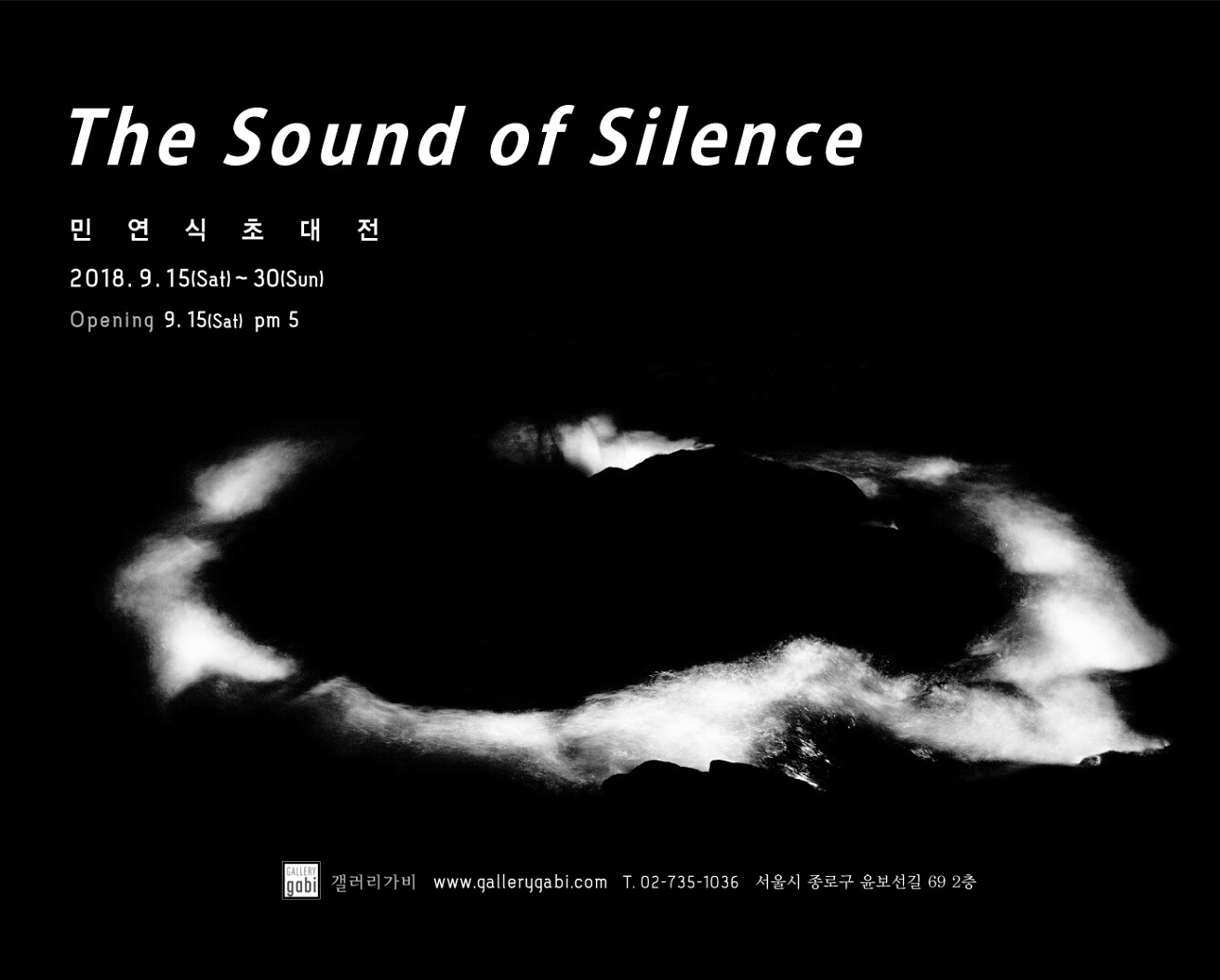
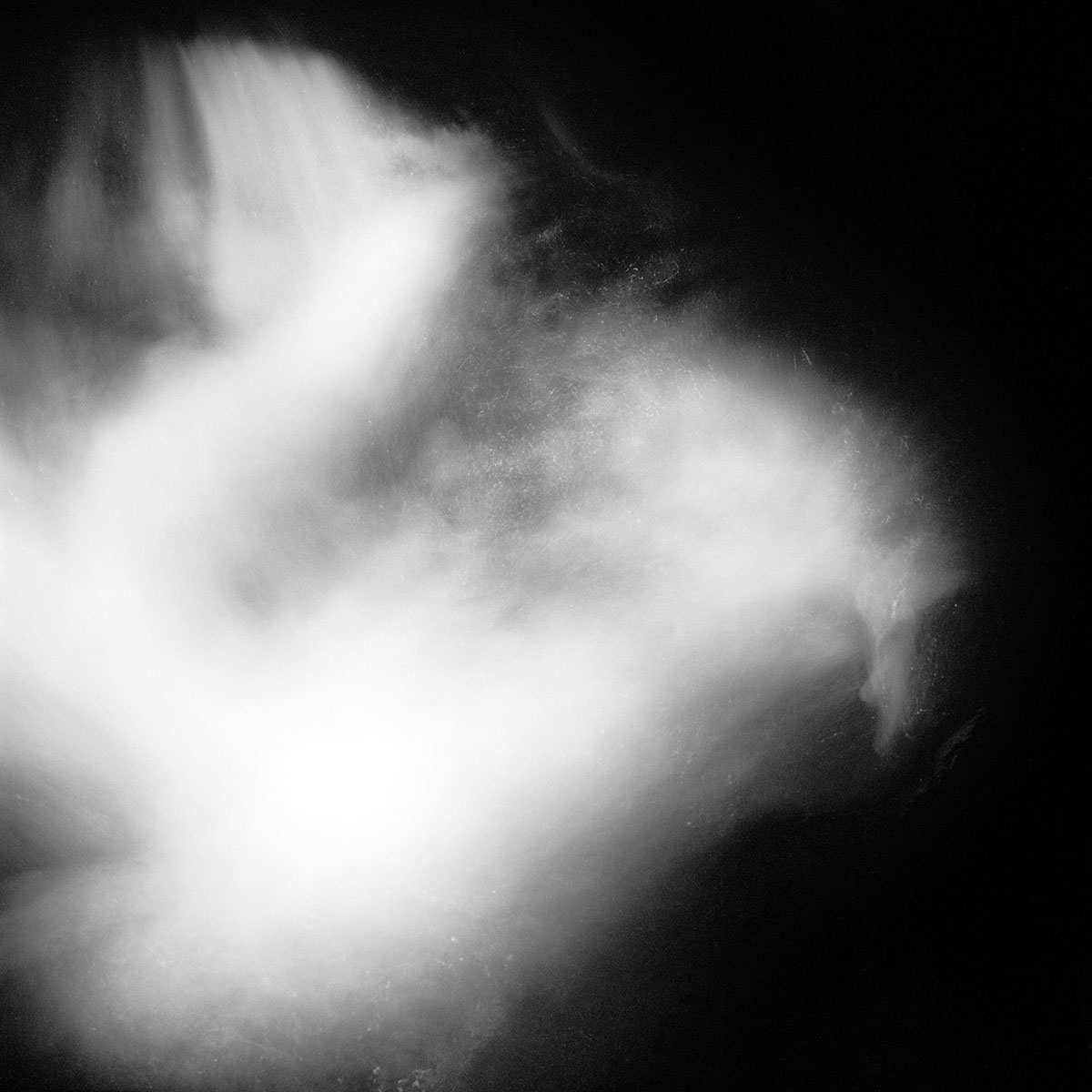
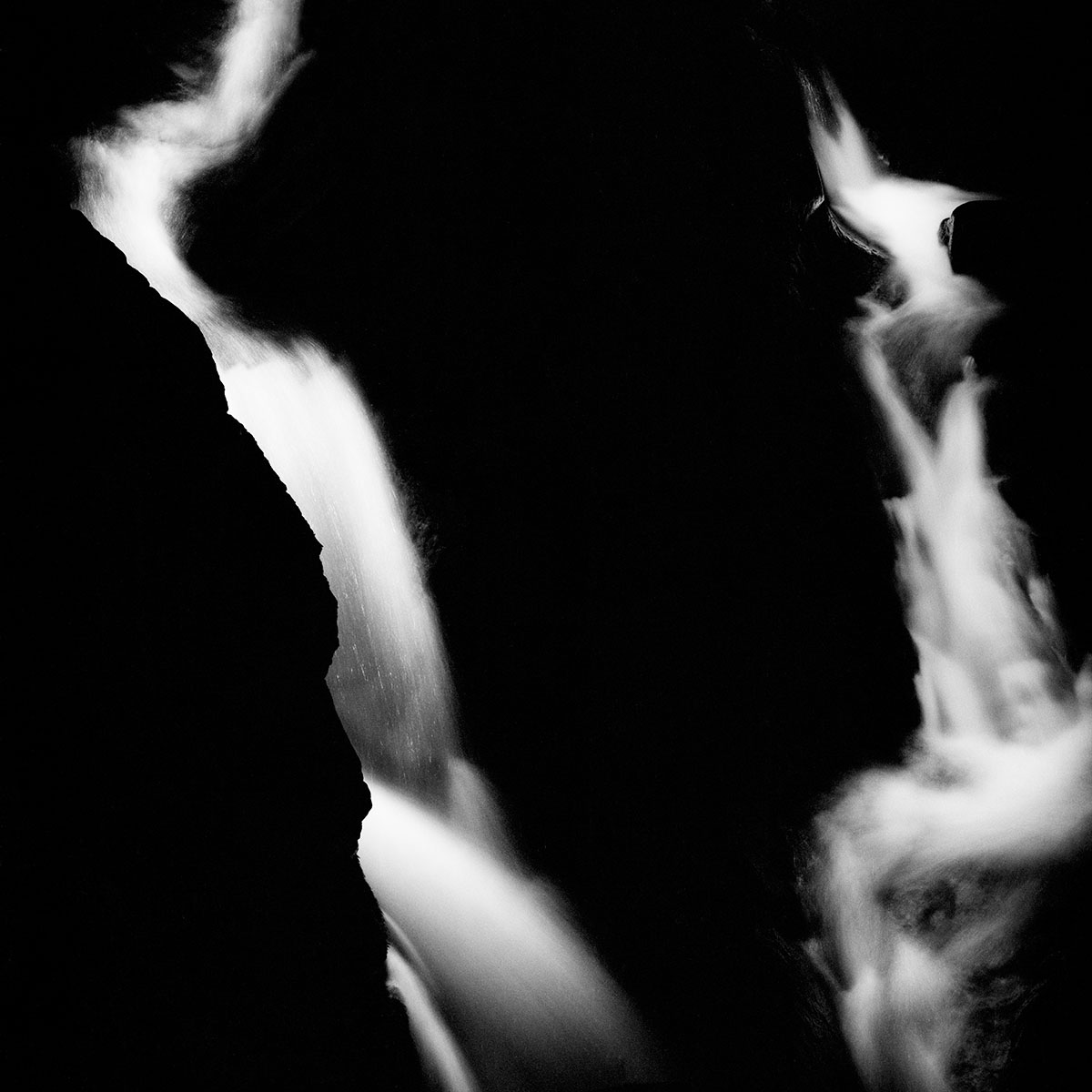
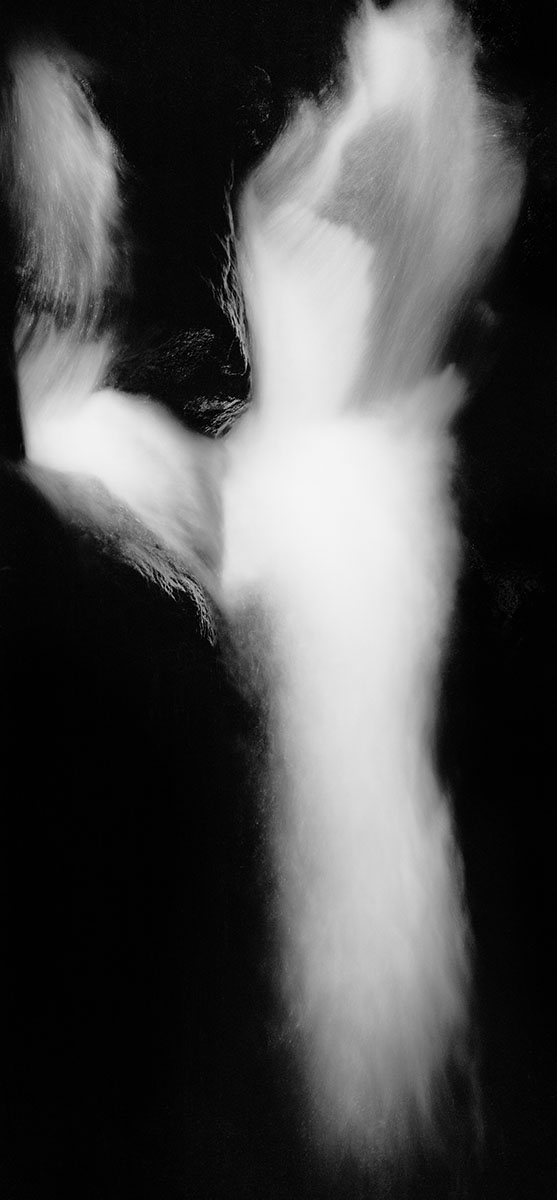
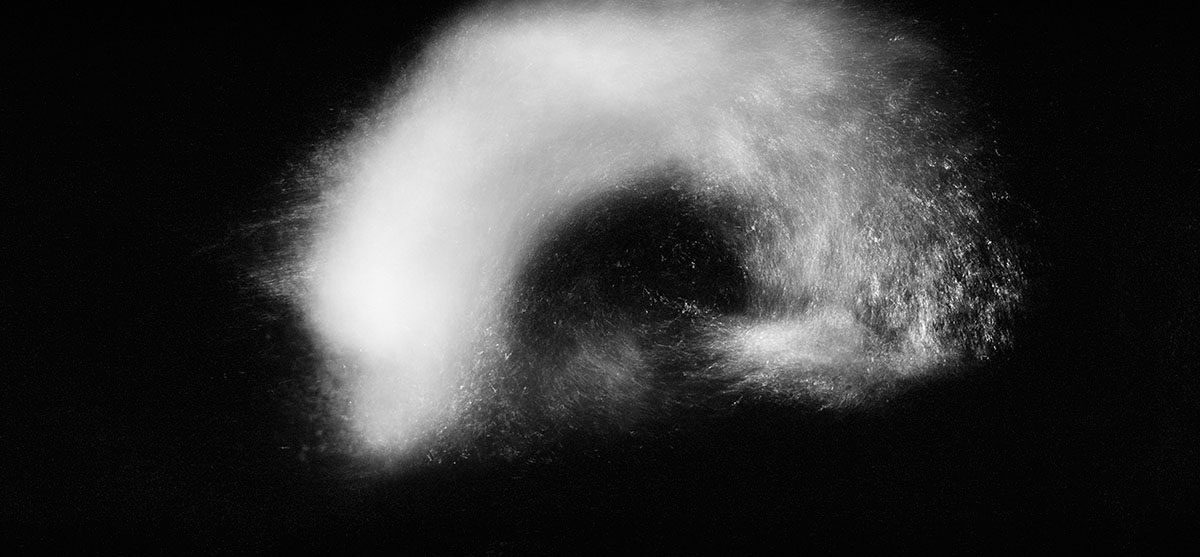
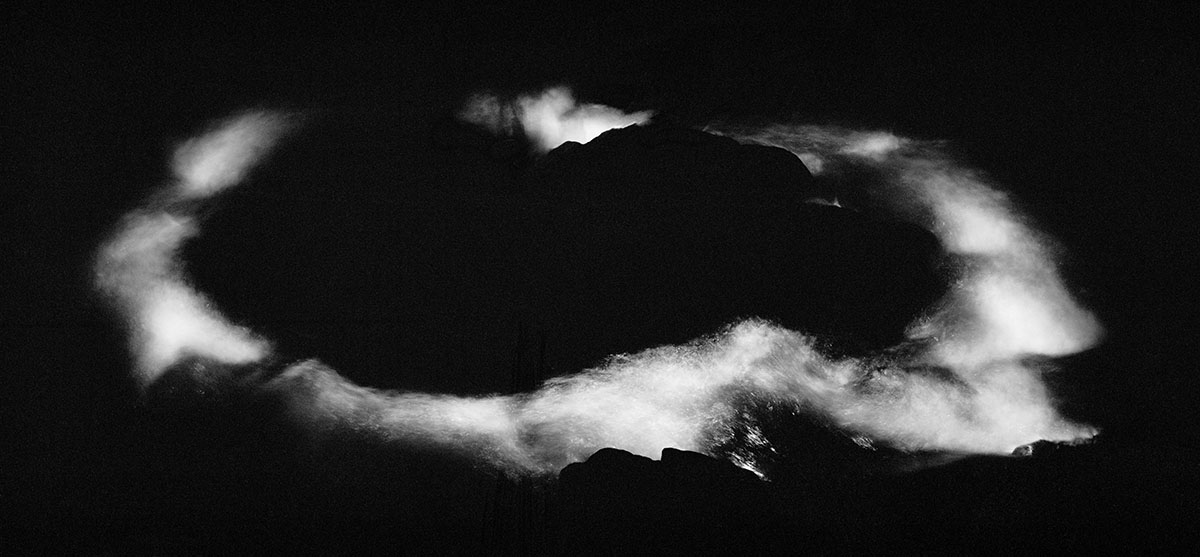
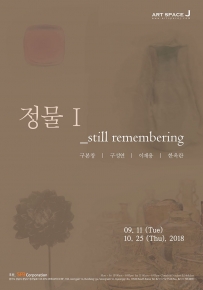 정물Ⅰ_still remembering
정물Ⅰ_still remembering
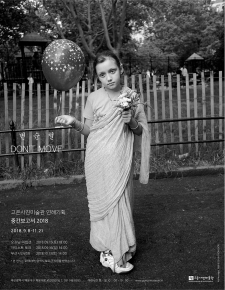 변순철 Byun SoonChoel
변순철 Byun SoonChoel
